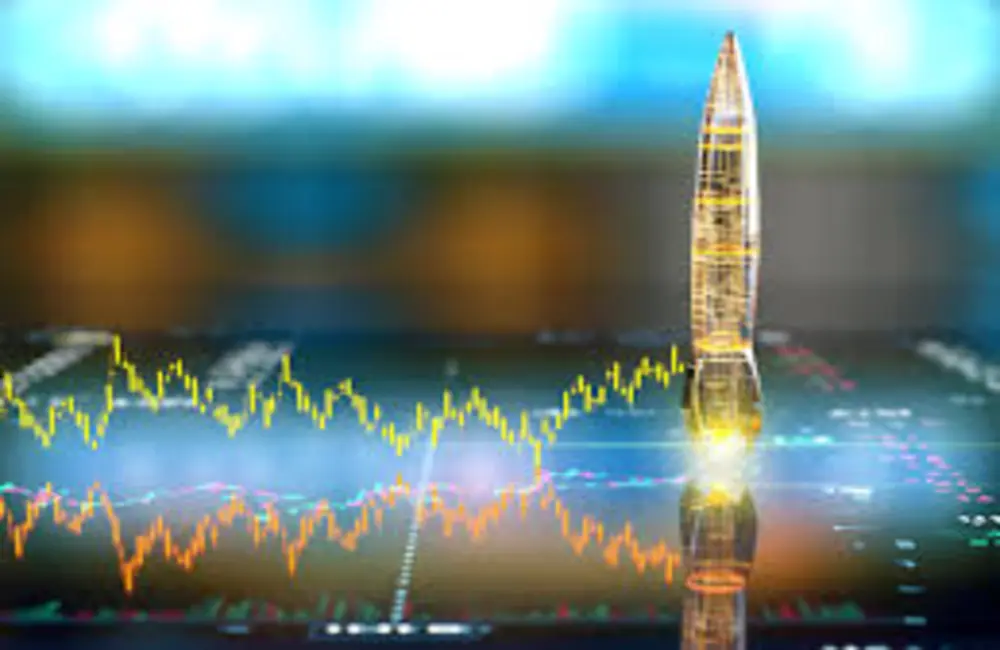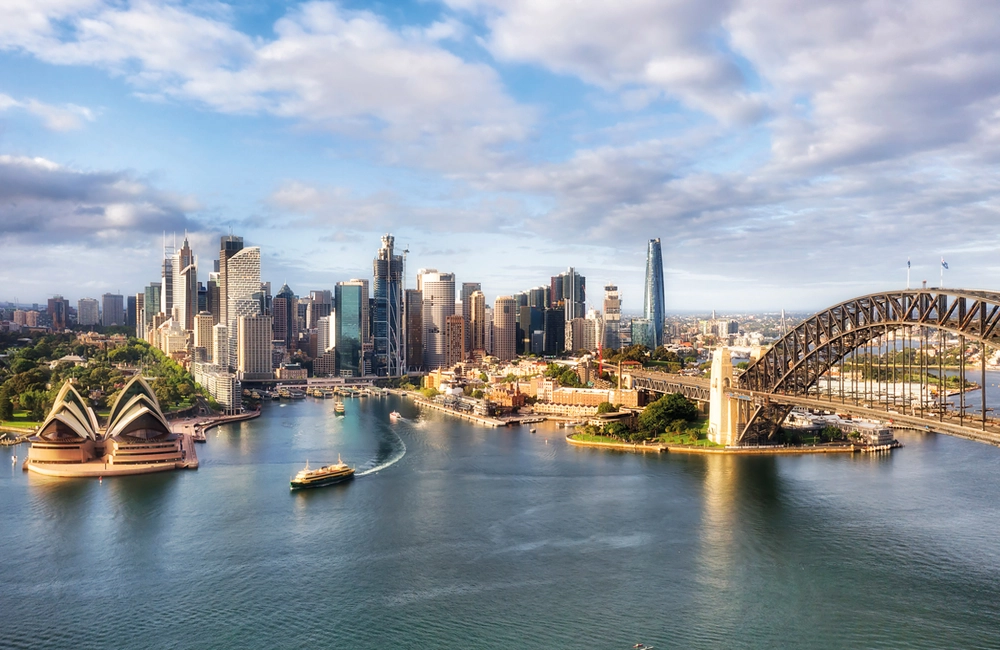ASX futures were down 64 points or 0.9 per cent at 7083 around 8.00am AEST, indicating a negative start to trade.
United States stocks dipped on Monday as investors weighed the potential for war between Russia and Ukraine, and the likelihood of interest-rate hikes by the Federal Reserve.
The Dow Jones Industrial Average fell 0.5 percent. The S&P 500 edged down 0.4 percent, while the technology-rich Nasdaq Composite was about flat, a loss of less than 1 point.
The local S&P/ASX 200 finished 0.4% stronger at 7243.9 after a choppy session. It opened lower following US stocks after concerns over Russia and Ukraine continued. The stock rallied into positive territory, dropped back to the gainline twice and then edged back to positive into the close.
Energy stocks surged as oil prices approached eight-year highs, with Woodside, Santos and Beach rising by between 3.6% and 9.4%.
The banks continued their recent rally, with ANZ, Commonwealth, NAB and Westpac all gaining between 1.4% and 4.8%.
Shares in gold miners gained piece in the geopolitical uncertainty, while weakness in iron-ore and lithium stocks weighed on the materials sector.
Overseas, European markets were also feeling the pain early in the session on fears of a potential ground war in Ukraine. The pan-continental Stoxx Europe 600 was down 1.8 percent, its third losing day in a row. The index briefly pared losses after Russian Foreign Minister Sergei Lavrov, speaking in a meeting with Russian President Vladimir Putin, said Moscow should keep talking with the US and its allies. Japan’s Nikkei 225 dropped 2.2% and China’s Shanghai Composite Index declined 1%.
In commodities, gold futures gained 1.76% to $US 1874.50 a barrel; Brent crude rose 1.6% to $US 95.99 a barrel; Iron ore declined 1.3% to US$149.
The yield on the Australian 10-year bond fell to 2.13% in the bond markets. The US 10-year Treasury yield rose to 1.99%. Yields fall when prices rise.
Near 8:00 am AEDT the Australian dollar was buying 71.20 US cents, lower than its last close of 71.33. The WSJ Dollar Index, which compares the US dollar to 16 others, climbed to 90.06.
Asia
Asian markets were busy, with Chinese stocks finishing lower following broad declines in other Asian shares on fears of tensions between Ukraine and Russia. The Shanghai Composite Index declined 1.0 percent, the Shenzhen Composite Index was down 0.4 percent, and the ChiNext Price Index closed down 0.5%.
Construction stocks also lagged amid fears of weak sentiment in China’s property sector. Greenland Holdings skid 2.8%, Shanghai Construction Group slid 1.7%, and Seazen Holdings fell 6.7%. Within bank stocks, Agricultural Bank of China fell 1.3% and Bank of Shanghai was down 1.4%.
The Hang Seng Index fell 1.4% in Hong Kong, with IG saying sentiment has been battered by stringent lockdowns implemented as covid-19 worsens around the city. Market players were “probably also reluctant to add more risk” in the wake of Russia-Ukraine tensions, IG ads. Real estate stocks were the biggest drag with Country Garden Services Holdings ending 6.7% weaker and China Resources Land down 5.9%. Other stocks: Xinyi Glass Holdings dropped 5.1%, and internet company NetEase fell 4.2%. Oil giant PetroChina was the biggest mover up with a 2.7% rise.
Japan’s Nikkei Stock Average slipped 2.2%, as Russia-Ukraine tensions intensified. Market participants are digesting the potential fallout from these tensions along with a stream of hawkish Fed rate hikes ahead, OCBC Treasury Research says. Sysmex fell 15%, Bridgestone tumbled 8.9% and M3 declined 7.1%. Oil explorer Inpex rose 6.6% and oil refiner Idemitsu Kosan gained 3.3%, boosted by oil prices.
Europe
European stocks closed sharply lower, as concerns over political volatility both in Russia and Ukraine spooked investors. The pan-European Stoxx 600 dropped 1.8%.
“Stock markets have taken steep losses this afternoon, bloodied by the rising tensions in eastern Europe, and will remain under pressure for the immediate future,” IG analyst Chris Beauchamp says. “Friday’s weakness has carried into the new week, and it appears the weakness in stocks is here to stay for a little longer.”
The FTSE 100 in London fell 1.7%, just one part of global stock markets that were lower on fears of war in Ukraine.
“Uncertainty is bad for investors and it will take serious guts to remain invested through a war, especially as news headlines are bound to rattle the markets,” AJ Bell said.
Among the biggest losers on Monday were British Airways owner IAG, which tumbled 5.6%, and the major banks, with Barclays sinking 5.1%, Lloyds down 4.2% and NatWest off 4.1%. HSBC and Standard Chartered ended 1.6% and 1.4% lower, respectively.
North America
US stocks dropped on Monday as investors weighed the war possibility between Russia and Ukraine and potential interest-rate increases from the Federal Reserve.
The Dow Jones Industrial Average fell 0.5%. The S&P 500 fell 0.4 percent, and the technology-heavy Nasdaq Composite was roughly flat, down less than 1 point.
European markets were shaken in early sessions by the threat of a potential ground war in Ukraine. The pan-continental Stoxx Europe 600 finished off 1.8%, its third consecutive day of declines. The index trimmed losses after Russian Foreign Minister Sergei Lavrov, in a meeting with Russian President Vladimir Putin, said Moscow should keep its dialogue with the US and its allies.
The fast-moving situation whipsawed yields on government bonds. They initially dipped as investors sought the safety of US Treasurys, then recovered on Mr. Lavrov’s comments and rose anew on hawkish comments from Fed officials about the pace of interest-rate increases. The yield on the 10-year Treasury notes was most recently 1.993%, compared with 1.951% Friday.
After weeks when the brewing conflict seemed to have little effect on Wall Street, US stocks swung lower Friday on the White House’s warning that Russia was in a position to invade Ukraine “at any moment.” Moscow has denied plans to invade Ukraine, but Russia’s military buildup has accelerated, with forces arrayed on three sides of the country. The United States is moving its embassy in the Ukrainian capital, Kyiv, to the western city of Lviv, close to the Polish border, the State Department said.
“The market has come to realize the risk that’s out there over the last week or so,” said Jon Adams, a portfolio manager at BMO Global Asset Management. “The difficulty is it’s very hard to calculate the risks of war between Russia and Ukraine, because it’s such an unpredictable set up.”
Stocks have also been rocked this year by the prospect of rate increases from the Fed. The central bank is preparing to raise borrowing costs to fight inflation at its highest in four decades, bringing to an end the easy-money policies that have propelled riskier assets for much of the last two years.
St. Louis Fed president, James Bullard, said Monday on CNBC that the Fed should “front-load” what it plans as rate increases, adding that the Fed’s credibility depended on it. A second influential Fed official, Kansas City Fed President Esther George, argued that the central bank should consider selling bonds that it holds in a $9 trillion asset portfolio to bring down high inflation.
Oil rose on worries that a war would disrupt supplies of Russian crude, and with limited spare supplies anywhere. Front-month Brent oil futures rose 2.2% to $96.48 a barrel, the highest settle for the global crude benchmark since 2014.
Natural gas prices, of which Russia is the world’s largest single exporter, increased on both sides of the Atlantic. In the US, benchmark gas prices surged 6.4% to $4.195 per million British thermal units. Prices in Europe, which relies on Russia for much of its gas — a good bit of it passing through Ukraine — increased 4.3%.
Palladium — a metal heavily used in the auto industry and primarily produced in Russia — rose nearly 7%.
That has made the standoff over Ukraine difficult to trade, investors say. If Moscow bombarded its neighbor and then the United States and its allies imposed sanctions in response, the ensuing hostilities could play out in unexpected ways on markets and the world economy.
One possible effect, what with Russia being a global commodities heavyweight, would be higher energy prices, which would maintain pressure on central banks to hike interest rates. At least initially, stocks and bond yields would tend to fall as investors flocked to safe assets, investors and analysts say.
“You have the inflation story, and then you have the Russian story,” said Lars Skovgaard Andersen, senior investment strategist at Danske Bank Wealth Management. If an invasion does happen, “there will be some negative effect on markets, but I think investors are also pricing this in,” he said.
Among individual US stocks, Splunk rallied 9.9% after the Journal reported Cisco Systems had made a takeover offer valued at over $20 billion for the software maker.
Stocks of vaccine-makers slid on data showing the Omicron wave of Covid-19 subsiding and after US health regulators said on Friday they would postpone a decision on authorizing the first vaccine for children under 5 years. Moderna stocks fell 13% on Monday, making it the worst performer in the S&P 500. Pfizer shares fell 2.8%, while US-listed shares of its partner BioNTech SE tumbled 9%.
Shares of airlines were hammered in Europe after reports that some were bypassing Ukraine’s airspace. Budget airline Wizz Air lost 6.3%, while British Airways parent International Consolidated Airlines Group fell 5.6%.

























